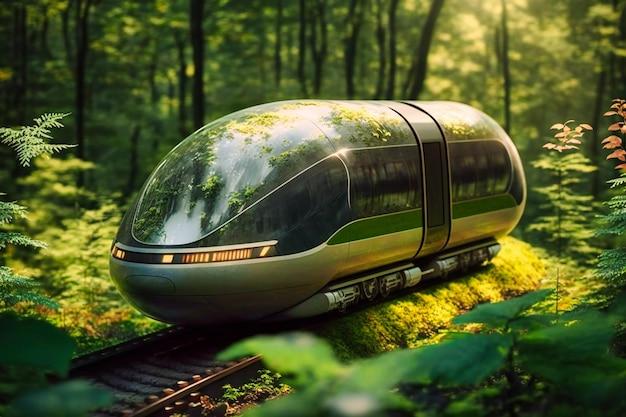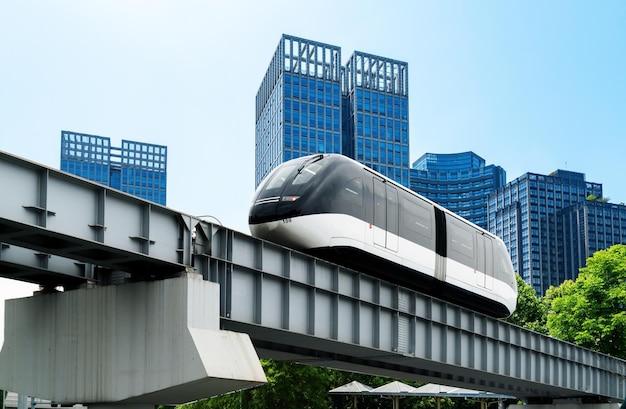Can you imagine traveling at speeds of over 300 miles per hour, floating above the ground, with no friction or conventional tracks? This is the captivating promise of maglev trains, one of the most revolutionary transportation technologies of our time. But, as with any innovation, there are both positives and negatives to consider.
In this blog post, we will explore the disadvantages of maglev trains and delve into the challenges they pose in terms of energy efficiency, cost, and practicality. We will also investigate the potential impact of maglev trains on our economy and learn about the principles behind their propulsion system. Additionally, we’ll address the concerns surrounding their deployment and delve into why they haven’t yet become a ubiquitous mode of transportation. So, hop aboard as we journey through the drawbacks of maglev trains in the year 2023.

Disadvantages of Maglev Trains
Maglev trains, while impressive in their technology and speed, do come with a few downsides that need to be taken into consideration. Let’s take a closer look at some of the disadvantages of these futuristic mode of transportation.
Costly Infrastructure Development
One major drawback of maglev trains is the significant cost involved in developing the infrastructure. The construction of the magnetic levitation tracks requires substantial investment, making it an expensive endeavor. From acquiring the required land to building the specialized tracks, the costs can quickly add up. Additionally, the maintenance and operation of the complex magnetic systems also entail ongoing expenses that could strain the financial resources of governments or private entities.
Limited Availability and Accessibility
Maglev train systems are still relatively rare around the world, limiting their availability and accessibility to the general public. Unlike traditional railway networks that have been established for decades, maglev train networks are far from widespread. This means that many commuters and travelers simply do not have the option to utilize this mode of transportation, as maglev lines are not yet extensively interconnected. Until maglev trains become more prevalent and cover a broader range of destinations, their benefits will remain confined to specific regions.
Compatibility and Integration Challenges
Integrating maglev train systems with existing transportation networks can be a daunting task. Different countries and regions often have their own unique rail systems, which can pose compatibility challenges when implementing maglev technology. This requires additional investments and efforts to connect maglev lines with conventional rail networks, potentially leading to delays and complications in the overall transportation infrastructure development process.
Energy Consumption and Environmental Concerns
While maglev trains are known for their energy efficiency when compared to some other modes of transportation, they still require a significant amount of electricity to operate. The massive electromagnets that enable magnetic levitation consume substantial energy, and sourcing this energy from renewable and sustainable sources is essential for minimizing the environmental impact. Furthermore, the manufacturing and disposal of the specialized components used in maglev trains can have ecological consequences if proper measures are not taken.
Safety and Reliability Considerations
Although maglev train technology has advanced considerably in terms of safety, concerns still exist. The reliance on complex magnetic levitation systems introduces a level of vulnerability to external factors such as power outages or system malfunctions. While rigorous safety measures are in place, accidents or technical faults can still occur. It is crucial to continually monitor and maintain the infrastructure to ensure the safety and reliability of maglev train operations.
In conclusion, while maglev trains offer high-speed travel and innovative technology, they do present some challenges and drawbacks. The cost of infrastructure development, limited availability, compatibility issues, energy consumption, and safety concerns are all factors that need to be carefully considered when evaluating the potential of maglev train systems. By addressing these disadvantages, we can pave the way for a more efficient and sustainable transportation future.
Keywords: disadvantages of maglev trains, cost of infrastructure, limited availability, compatibility challenges, energy consumption, safety concerns

FAQ: What are the Disadvantages of Maglev Trains?
Are Maglev Trains Energy Efficient
Maglev trains certainly strive to be at the forefront of energy efficiency. By utilizing magnetic levitation to float above the track, they can minimize friction, resulting in less energy consumption compared to traditional trains. So, yes, maglev trains are quite energy efficient!
How will a Maglev Train Impact our Economy
When it comes to the economic impact of maglev trains, the possibilities are as vast as the speed at which they travel. These futuristic trains have the potential to revolutionize transportation, connecting cities and regions with unprecedented speed and efficiency. This increased connectivity can boost tourism, commerce, and enhance business opportunities. As a result, a maglev train network could be a driving force behind economic growth and development.
What are the Disadvantages of Maglev Trains
While maglev trains are undeniably impressive, they do come with a few downsides. One significant disadvantage is the high cost associated with constructing a maglev infrastructure. The advanced technology and materials required make it a pricey endeavor. Additionally, the limited existing maglev infrastructure across the globe restricts widespread adoption.
Another drawback is that maglev trains rely heavily on a stable power supply. In the event of a power outage or disruption, it could render the train immobile, causing inconvenience to passengers. Furthermore, the electromagnetic fields generated by maglev trains could potentially interfere with nearby sensitive electronic equipment.
What is the Principle of Maglev Trains
The principle behind maglev trains is all about the magic of magnetism! These futuristic marvels use magnetic repulsion to hover above the track, eliminating the need for wheels, axles, or any physical contact. Magnets on the train and the track work in harmony to create a magnetic field that propels the train forward at astonishing speeds. It’s like having the power of levitation at your fingertips!
How much does it Cost to Build a Maglev Train
Ah, the age-old question of cost. As we mentioned before, constructing a maglev train system can be quite the expensive enterprise. The price tag for building a maglev infrastructure depends on several factors, including the distance covered, terrain, and the desired speed of the train. However, estimates suggest that it can range anywhere from millions to billions of dollars per mile. So, if you’re planning to build your own maglev train, you better start saving those pennies!
How does a Maglev Train Slow Down
When it comes to slowing down the lightning-fast maglev train, a cool process comes into play. To reduce speed or bring the train to a halt, the magnetic system is adjusted to create an opposing force. By altering the magnetic field, the attractive force between the train and the track increases, causing deceleration. It’s like magic, but with magnets!
What is the Fastest Locomotive
Hold onto your hats because the answer might blow you away! The fastest locomotive on the planet currently is the Maglev train in Japan, known as the “L0 series.” This speed demon holds the world record for reaching a mind-boggling top speed of 375 mph (603 km/h). It’s like riding a rocket on rails!
Why don’t we use Maglev Trains
While maglev trains have left us all in awe, there are a few reasons why they haven’t completely taken over the world. Firstly, the high construction costs and limited existing infrastructure make it challenging to implement maglev systems everywhere. Additionally, the technology is highly specialized, requiring significant expertise for maintenance and operation.
Moreover, the initial costs for passengers can be quite steep, potentially limiting their popularity. Lastly, the introduction of maglev trains would require a radical reimagining of current transportation networks, necessitating extensive planning and coordination between different regions and governments. It seems the world just isn’t quite ready for full maglev domination!
When High-Speed Trains Pass Each Other, is it Strongly Recommended that they Slow Themselves Down
When high-speed trains encounter each other on the tracks, it’s not necessarily a need for them to slow down. Modern railway systems are designed to handle the passing of trains at high speeds with minimal disruption. Thanks to advanced infrastructure and safety measures, trains can safely coexist on the tracks without the need to hit the brakes. They smoothly glide past each other, just like ships passing in the night!
How do you Make a Homemade Maglev Train
Now, this is where things get delightfully creative! Making your own homemade maglev train can be a fun and educational project. All you need is a few magnets, a lightweight object, and a smooth surface. Place the magnets in a way that creates a repelling force, and voila! Your DIY maglev train will magically float above the track. It’s a fantastic way to explore the principles of magnetism and unleash your inner scientist!
And there you have it—an informative, humorous, and comprehensive FAQ section on the disadvantages of maglev trains. So, whether you’re pondering the costs of building your own maglev system or contemplating the economic impact, we’ve got you covered. Maglev trains may not be without their challenges, but they still remain a fascinating mode of transportation that could shape our future.
